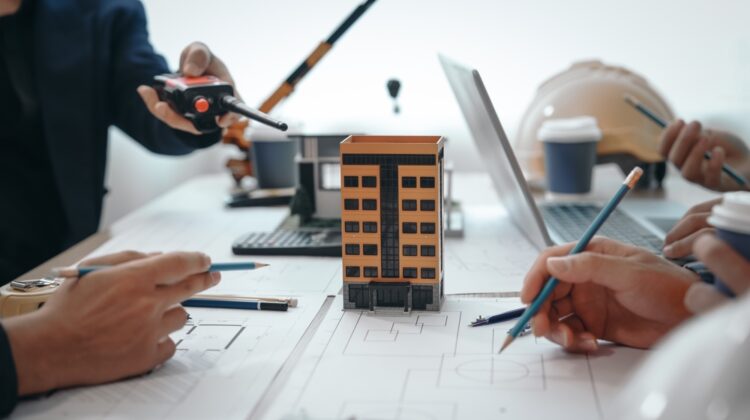
Environmental Impact Mitigation in Construction
Environmental Impact Mitigation in Construction
As cities expand and infrastructure grows, the environmental consequences of construction are becoming increasingly evident. From air and water pollution to soil degradation and resource depletion, construction activities have a direct effect on ecosystems. Therefore, environmental impact mitigation is essential for building sustainably and responsibly.
Implementing environmental impact mitigation strategies not only reduces ecological harm but also enhances project efficiency, regulatory compliance, and corporate reputation. Builders today must balance progress with preservation — ensuring that development meets human needs without compromising the planet.
What Is Environmental Impact Mitigation?
Environmental impact mitigation refers to the processes and strategies used to minimize, control, or offset the negative effects of construction activities on the environment. It is a core principle of sustainable construction methods and forms part of every project’s environmental management plan.
The goal of environmental impact mitigation is to ensure that construction projects are planned, executed, and maintained in ways that protect air, water, soil, and biodiversity — aligning with long-term sustainability objectives.
Why Environmental Impact Mitigation Is Important
Construction projects can have significant environmental impacts if not properly managed. These include deforestation, noise pollution, dust emissions, and waste generation. Implementing environmental impact mitigation helps to:
-
Reduce Pollution: Controls dust, air, and water contaminants.
-
Preserve Natural Resources: Promotes efficient material and energy use.
-
Support Biodiversity: Protects habitats and local ecosystems.
-
Ensure Compliance: Meets national and international environmental regulations.
-
Improve Sustainability: Enhances energy efficiency and reduces the carbon footprint.
Adopting environmental impact mitigation measures is essential for achieving green construction practices and maintaining ecological balance.
Key Strategies for Environmental Impact Mitigation
Modern construction projects use a wide range of techniques to minimize environmental harm. Below are the most effective impact mitigation strategies:
1. Sustainable Site Planning
Proper site selection and planning help reduce land disturbance and protect natural features such as trees, soil, and water bodies.
2. Waste Management and Recycling
Implementing waste management in construction ensures that debris and materials are properly sorted, reused, or recycled instead of ending up in landfills.
3. Low-Emission Equipment
Using low-emission construction equipment and machinery powered by biofuels or electricity reduces greenhouse gas emissions and air pollution.
4. Erosion and Sediment Control
Installing silt fences, retaining walls, and vegetative covers prevents soil erosion and water contamination.
5. Energy Efficiency
Incorporating energy-efficient systems and renewable energy sources like solar panels lowers operational energy use and carbon emissions.
6. Water Conservation
Techniques such as rainwater harvesting and water recycling systems help minimize water waste during and after construction.
Each of these methods contributes to comprehensive impact mitigation, ensuring projects remain sustainable and responsible from start to finish.
Environmental Impact Mitigation in India
India has made significant strides in promoting sustainable construction. The Central Pollution Control Board (CPCB) and the Ministry of Environment, Forest and Climate Change (MoEFCC) have introduced guidelines that mandate impact mitigation measures in all major infrastructure and real estate projects.
Developers are required to conduct Environmental Impact Assessments (EIA) before project approval, outlining how they will prevent and mitigate potential damage. Adhering to these practices supports urban sustainability and aligns with the nation’s vision for a greener, cleaner future.
Benefits of Environmental Impact Mitigation
Integrating impact mitigation strategies into construction offers both environmental and economic advantages:
-
Sustainability Compliance: Meets green certification standards like LEED and IGBC.
-
Cost Reduction: Lowers energy, water, and waste management expenses.
-
Improved Health and Safety: Creates cleaner and safer work environments.
-
Positive Brand Image: Enhances corporate reputation as a responsible builder.
-
Long-Term Resilience: Ensures buildings perform efficiently over time.
Ultimately, environmental impact mitigation drives long-term value and aligns business success with environmental preservation.
Integrating Mitigation with Smart Construction
To maximize results, impact mitigation should be integrated with advanced construction technologies. Tools like smart building technology, life cycle assessment (LCA), and digital pollution monitoring can track energy consumption, emissions, and resource use in real time.
Combining these innovations with traditional eco-friendly practices ensures a truly sustainable construction process — from planning to post-occupancy.

Partner with AMS India for Sustainable Projects
At AMS India, we specialize in sustainable construction and environmental management. Our team adopts advanced impact mitigation techniques to reduce pollution, manage resources, and enhance project sustainability.
We provide end-to-end solutions, from eco-friendly materials to energy-efficient designs, helping clients build responsibly while meeting India’s green standards.
Conclusion
In today’s era of rapid development, impact mitigation is no longer optional — it’s a necessity. By integrating sustainable design, responsible resource use, and innovative technologies, the construction industry can minimize ecological harm and create long-lasting benefits for communities and the planet.
Through consistent commitment to impact mitigation, we can ensure that every structure built contributes to a cleaner, healthier, and more sustainable future.
Read more related articles to enhance your knowledge and make informed decisions
Cost-Effective Modular Construction: Fast, and Sustainable Building Solutions
Smart Modular Buildings: Innovative, Efficient, and Sustainable Construction








